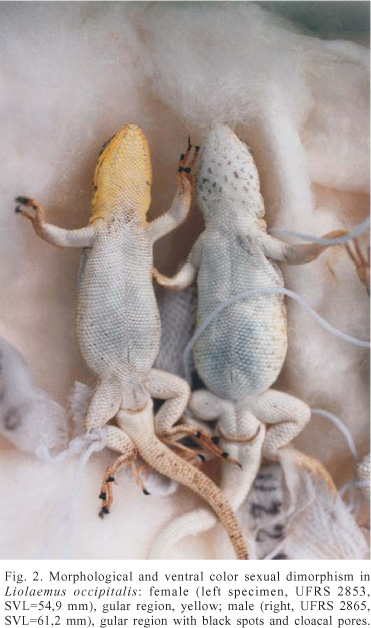The sexual dimorphism in size, morphology and color of the lizard Liolaemus occipitalis Boulenger, 1885 was studied. Thirty-two adult males and twenty-eight adult females were sampled from a population in the Jardim do Éden beach, near Tramandaí, Rio Grande do Sul, Brazil. Size related sexual dimorphism occurred in all compared body dimensions. The largest female was 59.6 mm in snout-vent length, and the largest male was 69.3 mm. Males and females also presented differences in ventral and dorsal color pattern, and in the presence of pre-cloacal pores. The results suggest that, in Liolaemus occipitalis, sexual dimorphism in size is determined by sexual selection, competition between males and by the high energetic cost for females a few months after hatching.
Sauria; Liolaemus; sexual dimorphism; sexual selection




